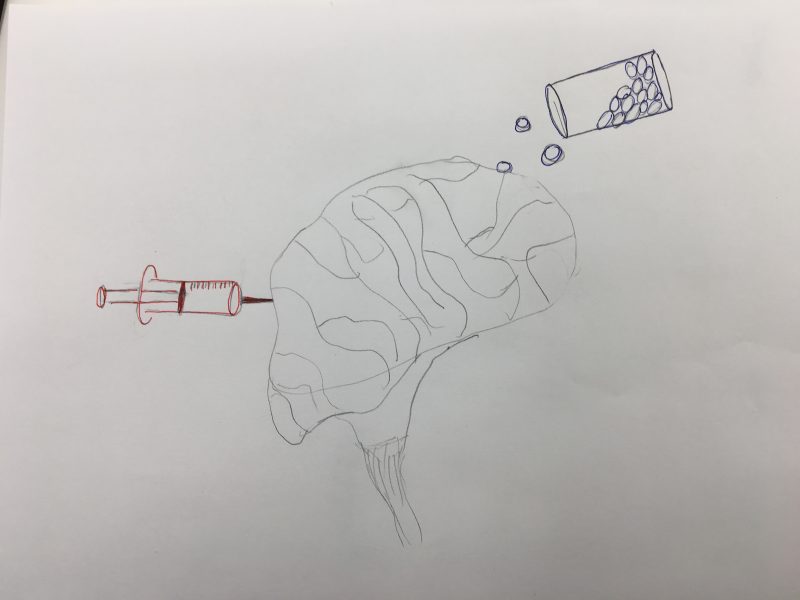It’s very easy for someone who does not have addiction issues to sit and wonder why addicts are unable to just stop doing their unhealthy behaviors. Why does he always eat junk food? Why is she constantly smoking crack? And a common one for me, why can’t Hannah stop shopping? The thing is, addictive behavior is an illness in the brain. While 50% of the risk for addiction comes from external factors, the other 50% is genetically transferred from generation to generation.

How does genetics play a part in addiction?
Transcription factors, such as CREB and ΔFosB, affect the brain’s reward regions (eg. VTA, the ventral tegmental area, and NAc, nucleus accumbens), which then potently influences behavioral memory.
Let’s talk transcription factors!
CREB
Considering the impact of drugs on the brain, stimulants and opioids activate CREB in many of the regions that are important for addiction and behavioral memory. CREB can be activated by cAMP, Ca2+, and growth factor pathways, but it is unknown which of the three that drugs play a role in the NAc. When CREB is activated by drugs in the NAc, it displays a negative feedback mechanism and CREB reduces the person’s sensitivity to the rewards of the drugs, which is called tolerance. The addict, still searching for the high they once had, has a negative emotional state when they experience withdrawal. Why does CREB do this to our behavioral memory? CREB acts on the two different types of NAc medium spiny neurons, primarily the D1 dopamine receptor. When the D1 dopamine receptor becomes activated, there is an increased influx of glutamate. The overwhelming response of glutamate arriving makes it difficult for any type of signal to be processed fully and completely, giving the drug users a euphoric high that they’re looking for in order to ignore all the problems in the world. And this makes them feel good! Why would they want to stop that?
ΔFosB
When using drugs, all Fos transcription factors are induced. However, ΔFosB is a little special. ΔFosB is a shortened version of the FosB gene. Because it has unusual stability, it can accumulate over repeated drug use. Its stability is also what allows for ΔFosB to remain in the body for weeks after the person has stopped using drugs. Like CREB, ΔFosB is selective for D1-type NAc neurons, which increases a person’s sensitivity to not only drugs, but also any type of rewards. The roles of ΔFosB and CREB split when it comes to dynorphins. Dynorphins are neuropeptides that bind to kappa opioid receptors found within the amygdala, hippocampus, and hypothalamus. Because they are in these regions, it’s valid to assume they play a part in memory, emotions, and learning. Dynorphins are believed to activate neural pathways that can then change neural plasticity. Repeated activation of this pathway can lead to social isolation and aversion towards people. While CREB induces dynorphins, ΔFosB suppresses them, which contributes to ΔFosB’s pro-reward effects. This ALSO is why drugs are so addictive.
However, it isn’t just drugs that are causing this process leading to addiction to happen. Anything that stimulates the D1 dopamine receptors are at potential risk to forming an addiction.
It’s hard to “just quit”. It is a process of rewiring the brain to unravel addictive behaviors. With these two genetic factors, it’s clear to see that addiction is not a choice. It is important to reserve biases about those with addiction and rather be a safe place in which an addict can express their thoughts and feelings.
